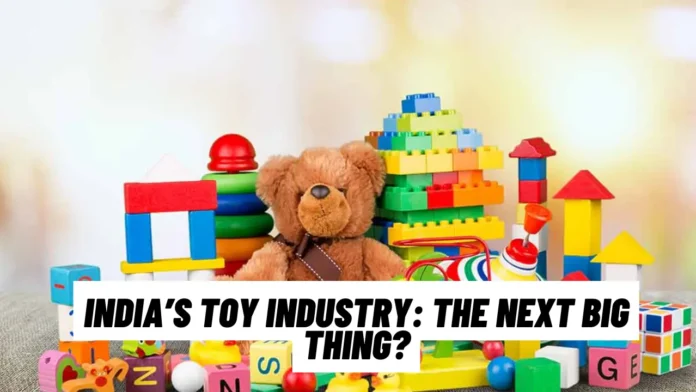India’s toy industry is on the verge of a significant transformation, emerging as a key player in the global market. With increased government support, growing domestic demand, and a shift towards local manufacturing, the sector is poised for substantial growth. This article explores the factors contributing to this rise and what it means for the future of India’s toy industry.
Government Support and Policy Initiatives
The Indian government has taken several steps to boost the toy industry, recognizing its potential for job creation and economic growth. Key initiatives include:
- Production Linked Incentive (PLI) Scheme: To encourage local manufacturing, the government has introduced PLI schemes that provide financial incentives to manufacturers based on their production levels.
- Quality Control Orders: The introduction of quality control orders ensures that only high-quality, safe toys are produced and sold in India, aligning with international standards and boosting consumer confidence.
- Toy Clusters: The government is promoting the development of toy clusters, which are specialized industrial zones aimed at enhancing production efficiency and fostering innovation.
Rising Domestic Demand
India’s large and young population is a significant driver of demand for toys. Increasing disposable incomes, urbanization, and a growing middle class are contributing to higher spending on toys and games. Parents are increasingly willing to invest in educational and interactive toys that aid in their children’s development.
Shift Towards Local Manufacturing
The global supply chain disruptions caused by the COVID-19 pandemic have highlighted the need for self-reliance in manufacturing. India is capitalizing on this by enhancing its manufacturing capabilities. Several domestic companies are scaling up their production, and international toy brands are setting up manufacturing units in India to reduce dependency on imports and cater to the local market.
Innovation and Sustainability
Indian toy manufacturers are focusing on innovation and sustainability to meet changing consumer preferences. There is a growing trend towards eco-friendly and educational toys. Companies are incorporating technology to create interactive and engaging products that cater to modern demands. Sustainable practices, such as using biodegradable materials, are also being adopted to appeal to environmentally conscious consumers.
Export Potential
With competitive manufacturing costs and improving quality standards, India is well-positioned to become a major exporter of toys. The government is actively promoting exports by participating in international trade fairs and establishing trade agreements with other countries. This opens up new markets for Indian toy manufacturers and boosts foreign exchange earnings.
Challenges and the Way Forward
Despite the positive outlook, the toy industry in India faces challenges such as high raw material costs, lack of advanced manufacturing technology, and intense competition from established global players. Addressing these challenges requires continued government support, investment in research and development, and collaboration with international partners to enhance technology and production processes.

